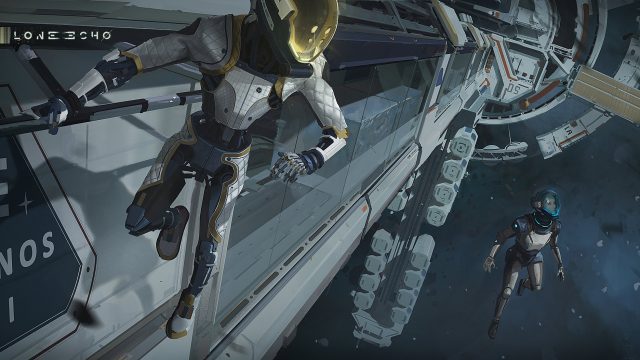Lone Echo, Ready At Dawn’s upcoming space-based VR game, employs a physics-based movement system where the player pushes and pulls themselves around a zero-gravity environment. A video presented at GDC highlights their procedural animation system that allows for convincing grip postures on arbitrarily shaped surfaces.
One of several exclusive games anticipated to launch on Oculus Rift and Touch hardware this year, Lone Echo is a first-person action game in a science fiction setting comprised of a story-driven single player mode and a team-based ‘esport’ multiplayer mode. Ready At Dawn’s technical prowess showcased in The Order: 1886 (2015) continues here, with the studio once again adapting to a new platform, developing an impressive physics-based movement system that plays to the strengths of VR motion controllers.
Jake Copenhaver, lead gameplay programmer at Ready At Dawn, recently gave a presentation at GDC about Lone Echo’s animation and locomotion system, entirely focused on the first person perspective. A teaser video (heading this article) was provided, which shows the inspiration (real footage of astronauts on board the ISS), the early prototype of the movement system, and the current implementation.
Zero-gravity movement is ideal for VR’s current motion tracking solutions, as astronauts mainly propel themselves around using their arms rather than their legs, grabbing handles or surfaces to pull or push. Lone Echo achieves this form of locomotion by positioning the head 1:1 relative to the hand as soon as it grabs something. This connection allows the player to pull towards or push away from objects in any direction, intuitively navigating the environment with physics-based interactions.
Copenhaver went into detail about the issues that needed to be solved, as the system had to work just as well on floating physics objects (of wildly different masses) as it did on fixed geometry. The next step was to develop a procedural animation system for the hands that would convincingly sell the movement and collision physics, as the player is free to grab ‘any and every surface’ in the environment. Only the ‘gun grip’ in the footage is pre-authored; every other animation is responding to objects and surfaces procedurally.
 In addition to the complex finger joint optimisation, there was the challenge of estimated inverse kinematics to animate the untracked joints, such as the elbows and shoulders, as well as the rest of the untracked body. A separate procedural animation is at play for the spine and legs, which move based on player velocity, combining with a propagating motion from player head and arm movement, as well as an additives layer for some animator control.
In addition to the complex finger joint optimisation, there was the challenge of estimated inverse kinematics to animate the untracked joints, such as the elbows and shoulders, as well as the rest of the untracked body. A separate procedural animation is at play for the spine and legs, which move based on player velocity, combining with a propagating motion from player head and arm movement, as well as an additives layer for some animator control.
The full presentation slides are available to view or download.






